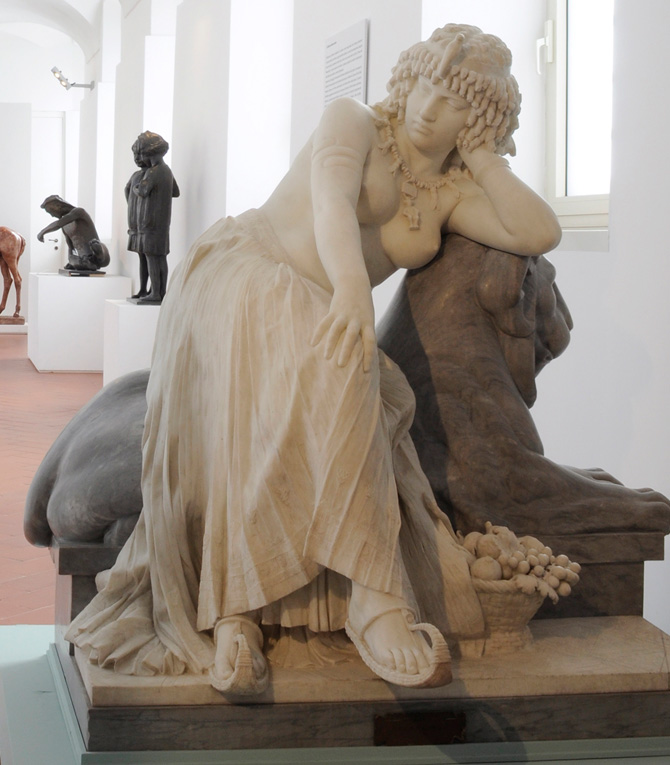Aphrodite Urania as patroness of the arts by Christian Griepenkerl 1877-1878
"Let us consider now the image of the Goddess identified by Herodotus with Aphrodite Urania. As was mentioned already, her Scythian name is given different renderings in the sources. The most widespread form is "Argimpasa" and then the etymology of that name is unclear. However, if we prefer the form "Artimpasa" (incidentally, it has been attested not only in manuscripts but on lapidary inscriptions as well), the first part of that theonym would prove to be identical to the name of the ancient Iranian deity Arti (later form Asi). This is the only instance of coincidence between the name of the Scythian deity and a character from another tradition using the Iranian language. Arti incarnates the material wealth that is accessible to people in its various manifestations: from the flocks and herds of domestic animals through various precious objects to abundant progeny. As a whole, the name Artimpasa is interpreted as someone "looking after Arti." The Goddess grants material wealth and welfare. In this context it is quite understandable that the Goddess was associated with the Greek Aphrodite Urania - the divine patron of the generating forces in the material world."
-Scythian Mythology, Dmitri Raevski (edited by Ivan Marazov), page 21
 |
| Aphrodite Urania as patroness of the arts by Christian Griepenkerl 1877-1878. Ceiling painting above the grand staircase in the Oldenburg Augusteum. |
Source:
https://commons.wikimedia.org/wiki/File:Griepenkerl,_Venus_Urania.jpg
https://the-paintrist.tumblr.com/post/136817039357/christian-griepenkerl-18391912-depiction-of
Quote:
https://archive.org/details/ScythianMythology/page/n19/mode/2up?q=aphrodite



Comments
Post a Comment